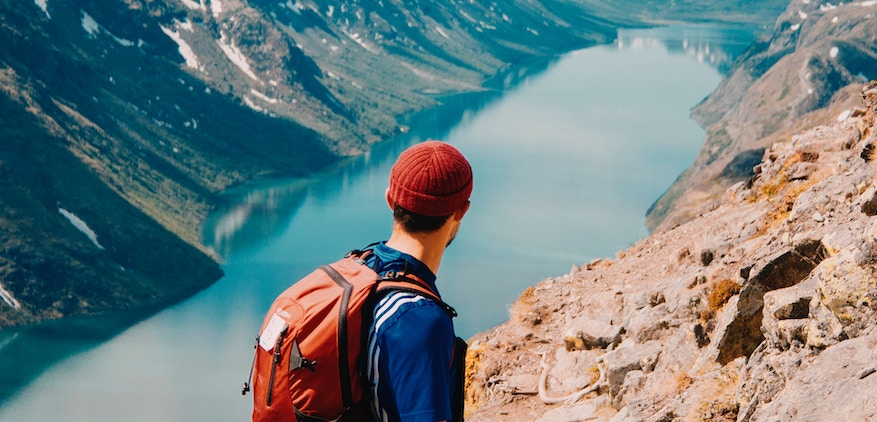Hiking is super fun, as it’s supposed to be. But(!) It can also be extremely dangerous to go hiking.
The list of pros about hiking is endless but like everything else in life – it comes at a risk. The risks will vary depending on where you go hiking and the difficulty level of the hiking path.
However, some things can’t really be taken into consideration before you leave, such as wild animals and nature itself.
There are however things that you can do in the form of proactivity, I have listed 6 things that you simply can’t afford to leave behind.
Experience
Practice makes perfect, so they say.
I don’t believe in the word “perfect”, or I do a bit. I consider “perfect” a state rather than a product. A table can’t be perfect, while the craftsman can make perfect work by using 100% of his focus. That does however not mean that the craftsman is perfect in any way.
My point is, experience plays a huge difference if you currently are in your perfected state of mind but you are not a perfect product in your idle state. Make sure to bring your experience in your most perfected state-of-mind.
Mood
You need to be able to resort to a positive way of thinking in order to complete many parts of a hike, at least if you go for an intermediate or the expert hikes.
Listen to your body, if you feel like you are under the weather – you are probably not supposed to go on a hike this very day.
A good mood will help you find innovative solutions when/if you get stuck while a bad mood can really beat you down mentally. A great mood will always take you further than the hiking path, de facto.
The mood can vary depending on your hiking company, so only bring those who you feel good around.
Frustration can easily occur if you’re stuck on a mountain with someone that you don’t like. Don’t do it. Bring a good mood and make sure to do what’s necessary to maintain your mood along the way.
Extra Clothes
Clothing is extremely important on a hike. First of all, make sure that you don’t use cotton socks as these traps moisture inside your boots. Use extra big shoes so there’s room for a pair of thick socks too!
Apart from the shoes, you need to be aware of the concept of hypothermia. Falling partly or completely into a stream or river will quickly make you shiver without any possibility of regaining your heat – unless, you brought a pair of extra clothes.
Ask your company to bring extra clothes too, since your extra clothes have a good chance of becoming equally wet as the clothes that you are wearing.
Firestarter
I’m your Firestarter, a twisted Firestarter! However, I need matches, lighter or a Ferro rod in order to start a fire. You too, need to be prepared for the scenario of being in dire need of heat at any point of your hike.
Fire can be used for multiple purposes; drying wet clothes, gaining body heat and preparing warm food/drinks. If you would feel cold on your hike when you are out of food, it’s wise to boil some snow/water with pine needles to make a cup of hot forest tea.
Although there are no caffeine levels, you’ll notice what wonders a hot drink can do to your body during these hikes.
Besides, the pine needles provide a fresh taste and contain up to 5 times more vitamin C than what lemons have! Bring (preferably 2) sources of fire and stay warm.
Navigation Tools
There are different ways of navigating. Most adventurers make their way by using a compass and a map while hiking while others only bring a map and use the sun as a natural compass.
Some hikers have spent months or years in certain areas/regions, these hikers usually don’t need map nor compass to navigate as they know their routes better than they know their neighbours.
If you always stick to the hiking path, you are very unlikely to ever need a map and/or compass. You bring these items for the same reasons that you bring your smartphone to a friend’s place – you won’t necessarily need it but sticky situations might occur and that’s when you’re happy to have brought your phone. Same thing goes with the map and compass.
You don’t necessarily need it, but if you get lost – you’ll thank me.
Water & Nutrition
It doesn’t really matter how long you’re planning to go hiking, you should definitely bring something to digest and provide energy throughout the hike.
You bring water and nutrients for the same reason as the map and compass; you won’t need it hopefully but bringing it might save your life or simply save you from a heavy energy dip that would have set you back for hours.
Water can usually be found in most mountains through streams and/or rivers, but make sure to filter or boil the water before drinking it.
Drinking unfiltered/unboiled water can make you sick quick so bring your own water or a small container to boil any water you find along the hike. Proactivity is the best activity.
